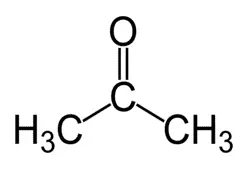Selection Strategies for HPLC Detectors in Quantitative and Qualitative Analysis play a critical role in the identification and quantification of pharmaceutical compounds, making them essential tools in ensuring the quality and safety of pharmaceutical products. Often referred to as the “eyes” of an analytical method, detectors directly impact the reliability of results. No matter how well a chromatographic method is developed, if the detector is not appropriately selected, the accuracy and validity of the data can be compromised.
Many chemists face uncertainty when it comes to selecting the right HPLC detector. Recognising this common challenge, I’ve put together this article to share practical, skill-based knowledge on the topic. In the sections that follow, I’ll cover the various types of HPLC detectors, the criteria for selecting the most suitable one, key detector characteristics, and answers to frequently asked questions.
By the end of this article, you’ll have a clear understanding of how to choose the right detector for your application, ensuring your analytical results are both accurate and dependable.

The following detectors are commonly used in pharmaceutical analysis:
Related: How To Control Impurities In Pharmaceuticals: Get Mastery In …
The following are the selection strategies for the different Detectors:
It is one of the most commonly used detectors in pharmaceutical analysis. Most pharmaceuticals have UV, which is why this is widely used. This detector can not be used for those pharmaceuticals that have no UV absorbance. For example, let us consider Phenol and Acetone:


Both Phenol and Acetone contain multiple bonds in their structure, and hence, they have very good absorbance in UV. Such compounds can easily be analysed on HPLC using UV detector.
| Solvent | UV cut off (nm) |
| Methanol | 210 |
| Ethanol | 210 |
| Isopropyl alcohol | 210 |
| Acetonitrile | 190 |
| Acetone | 310 |
| Water | 191 |
| Acetic acid | 260 |
| Formic acid | 210 |
| Hexane | 195 |
| Ethyl acetate | 255 |
| Diethylamine | 210 |
In a Photodiode array (PDA) detector, analysis can be done at multiple wavelengths simultaneously (in a wavelength range). It is very helpful for method development while selecting the wavelength. It is very helpful during method development in wavelength selection
This is not a commonly used detector, and it is used for a particular type of compounds. Fluorescence detector operates based on the principle of measuring the fluorescence emitted by certain compounds when they are exposed to the excitation light (Xenon lamp). Compounds containing fluorophores like Vitamin A and Vitamin E can be analysed on this detector.
This is a highly sensitive and selective detector. It is used as a universal detector, but it is not a commonly used detector. It is mainly used for impurity identification, structure characterisation and genotoxic impurities quantification. Due to its high cost, it is impossible to use this detector for routine analysis. Compounds like sucrose
It is not a commonly used detector. It has several limitations, like low sensitivity, can be used only in isocratic mode and can not be used in the gradient mode. This detector measures the refractive index of the analyte in relation to the solvent. Compounds like Glucose and Sucrose are analysed on an RI detector.
This is a sensitive and selective HPLC detector, but it is not a commonly used detector. This detector is based on the oxidation-reduction principle. Compounds like Phenol and Polyphenol can be analysed on an Electrochemical (EC) detector
This is a universal detector, but it is not a commonly used detector. It has several limitations, like it is not linear, and low-volatility compounds can not be analysed on this detector.
In my experience, selecting the right HPLC detector is not just a technical decision—it’s a critical step that directly influences the accuracy, sensitivity, and overall reliability of an analytical method. Too often, this selection is either overlooked or made based solely on availability rather than suitability for the target analyte or application. The following 7 tips must be considered while selecting the HPLC Detectors :
Background
A pharmaceutical company was developing a new oral formulation containing a sugar-based active ingredient that lacked strong UV absorbance. The R&D team initially attempted to use a standard UV detector for HPLC analysis, assuming it would be sufficient. However, the results showed poor sensitivity and inconsistent quantification.
Challenge
The compound did not contain chromophores, making it invisible to UV detection. Despite optimizing the mobile phase and method parameters, the signal remained weak and unreliable. This raised concerns about the accuracy of content uniformity testing and dissolution profiling.
Approach
A method review and detector evaluation were initiated. Based on the physicochemical properties of the analyte, specifically its lack of UV absorbance and volatility, two detectors were shortlisted:
Both were tested using the same chromatographic conditions with minor adjustments.
Results
Outcome
The ELSD was selected as the most suitable detector. Method validation confirmed accuracy, precision, and robustness. The validated method was successfully used for formulation testing and later approved by regulatory authorities.
Choosing the right HPLC detector is a crucial step in achieving accurate, reproducible, and meaningful analytical results, especially in the pharmaceutical industry, where quality and compliance are non-negotiable. A detector should never be selected based on convenience or familiarity alone; it must be chosen based on a thorough understanding of the analyte properties, detection requirements, and method objectives.
By understanding the strengths and limitations of various detectors—whether UV, PDA, RID, FLD, ELSD, or MS—you can make informed decisions that align with your analytical goals. Remember, a well-developed method is only as good as the detector behind it.
I hope this guide has clarified your doubts and given you a solid foundation for selecting the right HPLC detector. With the right knowledge and approach, you can significantly enhance the reliability and performance of your chromatographic methods.
Related Articles:
Related Video
Detectors like UV/Visible Refractive index, Electrochemical and Mass are used in HPLC
UV/Visible detector is the best detector in HPLC due to its sensitivity, selectivity and cost of analysis
In PDA detector analysis is performed between the range of two wavelengths, and hence at in a single run, data can be extracted at several wavelengths. It is used during HPLC method development.
RI detector measures the refractive index of the analyte in relation to the solvent. But it has several limitations, like low sensitivity, and it can not be used in gradient mode.
DAD is a Diode array detector, and its principle is the same as the PDA detector.In DAD analysis is performed between the range of two wavelengths, and hence at in a single run, data can be extracted at several wavelengths as per requirement. It is used during HPLC method development.
In PDA detector analysis is performed between the range of two wavelengths, and hence at in a single run data can be extracted at several wavelengths. It is used during HPLC method development. That is why a PDA detector is used in HPLC.
In UV detector analysis can be performed at selected wavelengths (one or two wavelengths), whereas in PDA detector, data can be extracted at several wavelengths as per requirement in a single injection.
Abbreviations
Further Reading
Quick Links